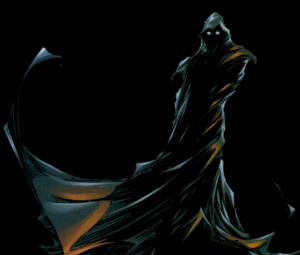 I had a recurrent dream when I was a child that I was being chased by faceless, flying demons wearing black capes. I frantically flew away (without benefit of airplane or wings, Superman-style) trying to escape them, and managed to wake up just before they destroyed me. I woke up sweating in fear nearly every night of my childhood.
I had a recurrent dream when I was a child that I was being chased by faceless, flying demons wearing black capes. I frantically flew away (without benefit of airplane or wings, Superman-style) trying to escape them, and managed to wake up just before they destroyed me. I woke up sweating in fear nearly every night of my childhood.
A psychoanalytic dream interpretation book I bought at a supermarket checkout stand diagnosed the dreams as symbolic of a sense of impotence, a helplessness and hopelessness to have an impact on the frightening world around me. And later, when I heard a late night talk show psychologist say that one could control one’s dreams just like a director directs movies, at about age 18, I turned around and faced the demons, daring them to expose their faces, and they all at once disappeared. I never had that nightmare again.
We each fight our own unique demons throughout our lives, and learning to fly was for me a symbolic way to overcome a life rooted in fear. I don’t know how many other pilots share that motivation, but I do know that nearly every pilot with whom I have ever spoken shares the quickening of the heartbeat and chill down the spine that comes the moment one loses the chains of gravity and launches into sky, leaving the earth and its accompanying worries below and behind.
Flying, like directing my teenage dreams of being chased, is one way some of us attempt to manage fear. The term that every pilot learns immediately when taking flying lessons is that he or she is the “pilot in command,” a way of drilling deeply into one’s psyche that the ultimate responsibility for making the decisions and taking the actions that will keep you and your passengers alive is yours, and it is a responsibility that doesn’t cease until all occupants are safely off the airplane.
Being pilot in command means that you are in ultimate command even when a controller tells you what to do, that no matter what anomaly or distraction threatens you, you are where the buck always stops. It means, ultimately, that no matter how frightening the demons are that are chasing you, you must turn toward them and face them. And that is the only thing that will make them go away.
Dreaming appears to be a fairly ubiquitous phenomenon, shared by most animal species on earth. (New book title: Do Plants Dream?) Whether dreams are simply the “residues of the day,” whether dreaming is a form of catharsis or working through of conflicts, most dreams probably don’t need a conscious director. To beg the aviation metaphors a bit, they probably do just fine on auto-pilot. But when the content of our dreams become disturbing to us, whether those dreams occur during sleep or wakefulness, it is time to find the pilot in command within us.

Thank you Ira for your inspirational words and encouragement to not fall into “Auto-Pilot” and maintain control of our lives.
I never fail to learn from you.